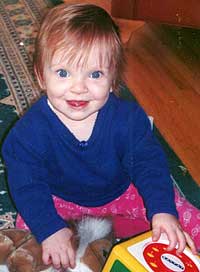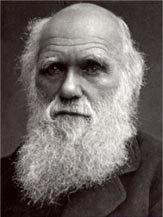If you're reading this, chances are good that you're looking at some kind of electronic device — a desktop, laptop, PDA or mobile phone. So are millions of other people, and the sum total of all the plastic, metal, wires and chips that go into these intricate devices, not to mention all the energy they use, is another part of both climate change and the bigger environmental picture. The problem is right at your fingertips, and so are the solutions.
Buy greenerThe first component of greening your computer is making sure it's better for the environment on the front end. A number of nasty chemicals go into the seemingly innocuous monitors and CPUs that are a part of our daily lives, so buying from manufacturers that have eliminated or reduced those substances is a good way to start.
"When a computer dies, what you've got there is a pile of materials, many of them very toxic," says Jim Puckett, coordinator of the Basel Action Network (BAN), a nonprofit organization that monitors electronic waste and other toxics.
When they're dumped in landfills, these substances can leach into groundwater; when they're incinerated they can be emitted into the air. This problem can be addressed by purchasing from manufacturers that have eliminated or started to phase these materials out, or by making sure the computers are recycled or responsibly disposed of at the end of their lives.
In April, Greenpeace published a guide to green computers that helps consumers see how products measure up. The ranking listed manufacturers based on both their commitment to eliminating harmful substances and on their recycling initiatives to keep old computers out of the waste stream. Lenovo, Nokia, Sony Ericsson and Dell topped the chart. Apple was ranked a solid last, though since the report was released, the company has made significant advances in its environmental policies.
Besides ranking high on the Greenpeace report card, Dell receives consistent praise from environmental groups for its comprehensive approach to lessening the company’s effect on the environment. From front end to back end, Dell has been an industry leader, making sure that everything about its products has a minimal impact.
"We look at the environmental aspects of our products from a lifecycle approach," says Tod Arbogast, director of sustainable business for Dell.
In addition to phasing out hazardous materials, Dell is focusing on designing its products to be more energy-efficient, Arbogast says. The company was a founding member of the EPA's Energy Star program in the 1990s, and its newest products use up to 70 percent less energy than older models.
Another big goal for the organization is waste minimization, with a target of sending only one percent of the waste generated to the landfill. "I don't know how to get there, but that's part of being a leader — setting long-term goals and driving to them," says Aborgast.
Responsible recyclingPart of Dell's plan for reaching that goal includes improving its e-waste recycling program, another area where the company has been a leader. Dell has agreed to take back any old computer — no matter who manufactured it — and recycle it. Dell is aiming to recover 125 million kilograms of electronic products by 2010 and continue expanding its e-waste recycling programs.
"That's the kind of thing we want to see every company do," says Barbara Kyle, director of the Computer TakeBack Campaign, a nonprofit coalition of groups working to clean up the computing industry. "That's the kind of corporate responsibility we think these companies need to take."
Not all recyclers are created equal, however, and the current framework amounts to a spotty patchwork of policies in states and municipalities across the country. Kyle would like to see more manufacturers instituting take-back policies, since right now there are no federal standards for how to recycle and who should be responsible for it.
Five states have passed statewide regulations and two more have similar measures pending, but none of the bills are exactly the same. In most cases, the responsibility falls on the consumer to find a private facility that will recycle old products. But many recyclers ship the old computers to the developing world, where they're torn apart in factories by underpaid workers without any health and safety standards. More than 80 percent of the computers that go to recyclers within the United States are shipped overseas, where the dismantling equipment is much less sophisticated, but where the process can be done cheaply and outside of our regulatory standards. This pushes the toxics problem onto countries where there is little infrastructure to deal with the waste, causing health and environmental problems in those areas.
An international treaty known as the Basel Convention bans trans-boundary movement of hazardous wastes –– but the United States hasn't signed on. Some recyclers have been caught destroying used equipment in ways not environmentally sound or healthy for employees.
However, there are plenty of good recycling programs out there, if consumers are willing to hunt for them. More than 30 recyclers in the United States have signed the Electronics Recycler's Pledge of True Stewardship, which mandates that all decisions about handling electronic wastes be consistent with the Basel Convention. These recyclers have agreed to responsibly recycle used products within the United States, using technologies that make the process safer.
Another option is to donate still-functioning computers to schools, community centers or nonprofit organizations like Goodwill Industries — places that can get more mileage out of your old machines. Better yet, invest in machines that will last longer and be able to handle software and system updates without needing a lot of new equipment. The longer your old computer lasts, the less often you'll have to buy a new one.
Environmentalists worry that with a growing number of computers becoming obsolete every day, the problem is only going to increase. And without a federal standard, for now the burden lies with consumers.
Learn more about computer recycling at these Web sites:
Greenpeace Guide to Greener:
Electronics:
http://www.greenpeace.org/international/campaigns/toxics/electronics/how-the-companies-line-upElectronics Recycler's Pledge of True Stewardship:
http://www.ban.org/pledge1.htmlSilicon Valley Toxics Coalition:
http://svtc.etoxics.org/site/PageServerComputer TakeBack Campaign:
http://www.computertakeback.com/Electronic Product Environmental Assessment Tool (EPEAT)
http://www.epeat.net/Basel Action Network:
http://www.ban.org/





